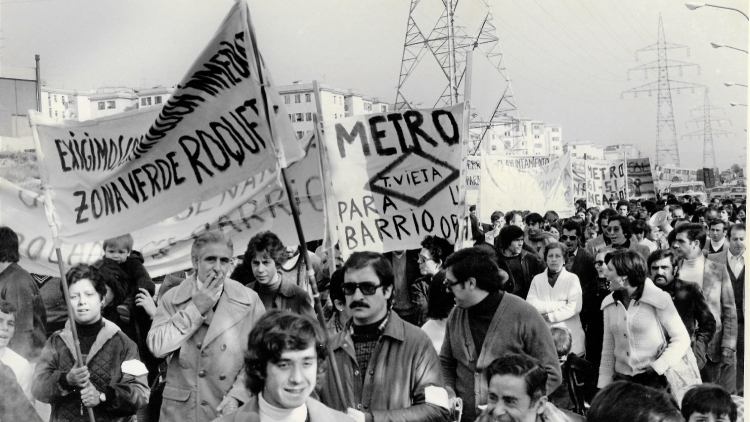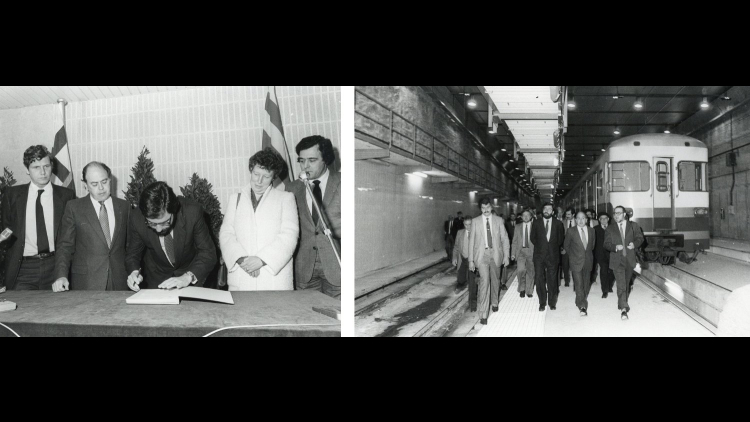The urban structure
Nou Barris’ physical separation from the rest of Barcelona was a fact on a social, cultural and urban planning level. The lack of public transport connecting it with the rest of the city meant the arrival of the metro there was a priority for the new democratic council.
In 1982, the budget for expanding the metro was increased 400-fold. The redevelopment of Virrei Amat station dates from then, as does the opening of the Roquetes stop.
Following years of demands, the inaugural ceremony for the Roquetes station was attended by nearly 2,000 people. Taking advantage of the presence of both the city’s mayor, Narcís Serra, and the president of the Generalitat, Jordi Pujol, the crowd called for outstanding work on the station concourse to be finished and for street-level access.

Expanding the metro to Nou Barris was one of the main demands put forward by residents’ associations in the district. The neighbourhoods of humble origin and working-class tradition also called for decent public transport services (Author: Kim Manresa, Roquetes-Nou Barris Historical Archives)

Inauguration of the Guinardó-Roquetes stretch of Metro L4 on 19 April 1982. Attended by the President of the Generalitat, Jordi Pujol, the Territorial Policy and Public Works Minister, Josep Maria Cullell, the chair of Transports Metropolitans de Barcelona (TMB) and city councillor, Mercè Sala, and the mayor, Narcís Serra (Author unknown, AMDNB)

The inaugural ceremony began at the Roquetes station, where the local authority representatives cut the tape and boarded a special train for the journey along the new stretch. This stretch meant an extension of more than three kilometres in the metro system and included the Maragall, Llucmajor and Roquetes stations (Author unknown, AMDNB)

